Whether you are out on a boat witnessing the majestic sight of a whale breaching or simply preparing to cast your line after seeing a trout jump, there is something about an aquatic creature leaping out of the water that fascinates us.
But why do they do it?

In this article, we give some explanation for why fish, both in the wild and in your home aquarium, might jump from the water and how to best protect your aquatic friends.
[toc]
Why Do Fish Jump?
Jumping out of the water is a method used by fish to accomplish several things.
To Escape Predators
One of the biggest reasons that fish jump from the water is to escape predators. Jumping is an excellent defense mechanism, allowing the fish to quickly get out of a perilous situation.
Impressively sleek and powerful, the blue marlin is known throughout the sport fishing world as an incredible jumper.
As soon as they are hooked, marlins will begin jumping and thrashing to free themselves. Their strength, top swimming speed of 60 mph, weight of 1500 pounds, and length of 16 feet make for an impressive sight and an extraordinary challenge.
Other sport fish, such as yellowfin or bluefin tuna, wahoo, and mahi mahi will also jump when hooked.
In your aquarium, marbled hatchet fish and African butterflyfish can jump as an escape mechanism.
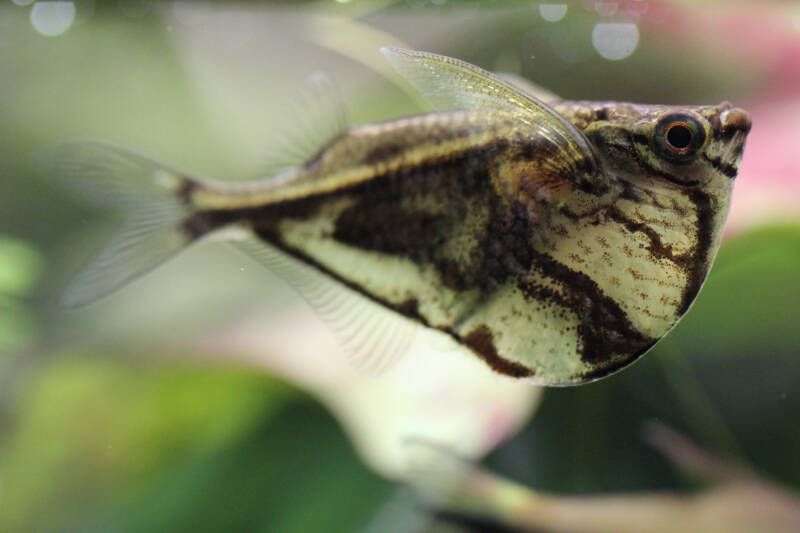
Hatchet fish are adept surface hunters, but their small size makes them tempting prey. Their miniature frames are highly muscular, and their strong pectoral fins allow them to skim along the water surface to avoid predators.
The African butterflyfish can leap impressively out of the water to avoid becoming another fish’s lunch.
To Overcome Obstacles
If you have ever watched a documentary on bears, you have no doubt seen salmon leaping up waterfalls during spawning season.
These athletic feats are made possible by the salmon coiling its body and tail, combined with a burst of quick swimming.
The depth of the pool at the bottom of the waterfall, the angle of the jump, and the speed of water flow also come into play.
The strong instinct of these fish to reach the waters in which they were born leads to a fierce determination to succeed.
To Catch Prey
Occasionally, a predatory fish will move so quickly in their hunting that they can launch themselves out of the water while pursuing their fleeing prey.
Blue marlin fish and even sharks can do this when hunting near the water surface.
Other species will jump purposely to catch prey above the surface, such as the southern Saratoga fish, which will jump to catch frogs or even small birds.
The African butterfly fish may leap to catch insects at the water surface.
Needlefish hunt by jumping out of the water to take advantage of their prey’s blind spot.
Something Scares Them
The invasive Asian carp, which has established large populations in portions of the Mississippi River, will leap out of the water if something spooks them.
Believe it or not, the sound of a boat’s motor has been known to cause these fish to jump out en masse as the boat passes through their area.
Not only can they leap in a group, but they can also achieve a respectable height in the process – up to 10 feet!
To Move Across Land or Between Bodies of Water
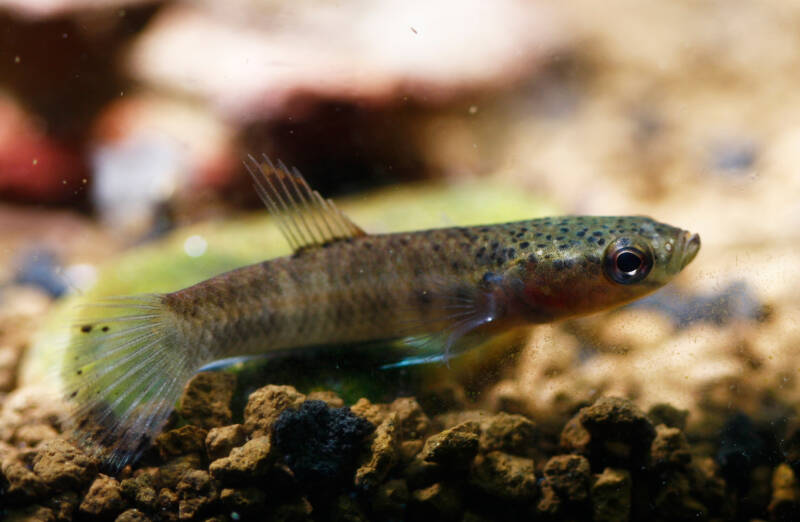
If the water in which a fish lives is unsuitable, some species, such as the betta fish, will leap from one body of water to another.
They can make these jumps due to an adaptation that allows them to intake oxygen from the air as well as from the water.
Although many bettas purchased on the market today are captive bred, they retain their wild instincts and can suddenly decide to take a leap if you let your water conditions deteriorate.
To Show Off or Play
One of the most famous of all aquatic jumpers is the dolphin. These intelligent creatures will launch themselves out of the water for a number of reasons, including communication, hunting, and just for fun!
Wild dolphins will frequently coordinate their jumps as a way to bond or let others know where they are.
These jumps can be impressively high, with a maximum height nearing 25 feet!
Mudskippers are well-known examples of fish that manage to scoot their way between pools of water using their powerful pectoral fins.
In addition, males of the species will whip themselves into the air, up to 1.5 feet in height, to display for females and attract a mate.
Do Aquarium Fish Jump Out of the Water?
Not all species are at risk for jumping out of your aquarium, but it is worth the time to research their behavior and best determine how to protect them.
What Indicates That a Fish Might Jump?
Below are a few factors that can increase the chance your fish will jump.
Surface Feeders
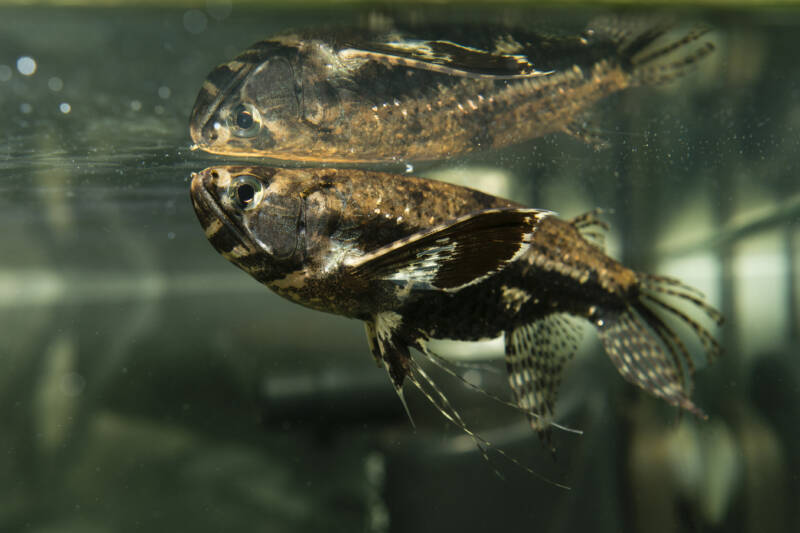
Fish that naturally feed at the water surface are the most likely species to jump.
Consider the marbled hatchet fish and African butterfly fish, which not only feed at the surface but will also jump out of the water to knock down insects or escape from prey.
Natural Jumpers in the Wild

If jumping is a natural behavior for a fish in the wild, then the domesticated versions will likely display the behavior as well.
A wild betta fish will leap between bodies of water to reach food, a mate, or escape a predator. They may attempt the same in your aquarium.
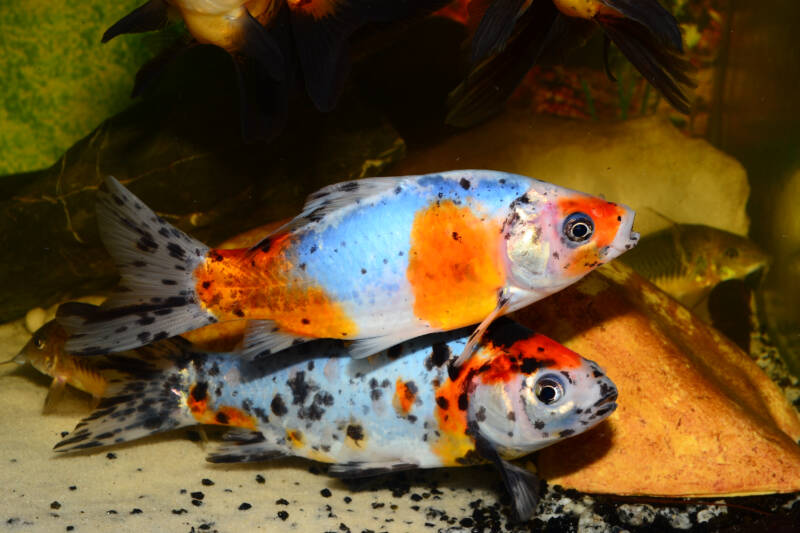
Other common aquarium fish that are known to jump include the comet goldfish, koi, and firefish.
Too Many Fish in the Tank
Overcrowding can cause a range of problems, including low dissolved oxygen and elevated levels of stress and aggression. In some cases, these can lead your fish to leap out of the tank to get away from the cause of stress.
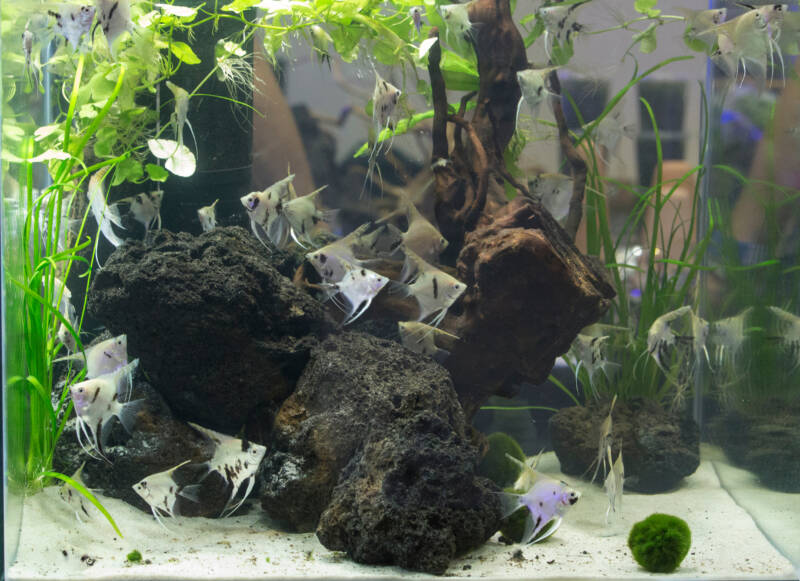
Always verify recommended stocking numbers. For some species, the right number of fish can be quite low.
Abiding by these recommended numbers is your best bet for keeping aggression low and lessening the chances of an escape.
Your Fish Could be Sick
Fish that have bacterial infections or parasites will behave differently. The distress may cause them to rub against items in the tank or even jump out of the water to relieve the annoyance.
Become familiar with the signs and symptoms of common aquarium fish ailments.
The sooner you begin treatment for many of these illnesses, the better the outcome for your fish.
Improper Water Conditions

Fish are survivors. If they find that the conditions in their tank are not sufficient, they may try to leap out in an attempt to find better water.
Always monitor your water conditions to ensure they are within the parameters needed by your fish.
Check Your Oxygen Level
Use a test kit and perform regular water changes to keep your tank in good shape. Oxygen can quickly become depleted if your aquarium is overstocked or if you let algae get out of control.
Keep Ammonia, Nitrites, and Nitrates Low
Other water parameters to check regularly are your ammonia, nitrite, and nitrate levels. Ammonia and nitrites should be 0 ppm, while most species prefer nitrate levels below 20 ppm.
Establish Stable Water Temperature
Each species has its optimum water temperature range. Installing a heater and thermometer will help ensure steady temperatures.
Clean Your Tank
While regular testing will help you monitor water parameters, it is regular cleaning that will keep them within an acceptable range.
Remove excess fish food, decaying plant matter, and fish waste. A gravel vacuum will be helpful in preventing buildup of materials in the substrate.
Install a Filter
Make sure that the filter you install is suitable for your size of tank. Rinse the filter medium monthly and replace it on the manufacturer’s recommended schedule.
How to Prevent Your Fish from Jumping Out of the Water
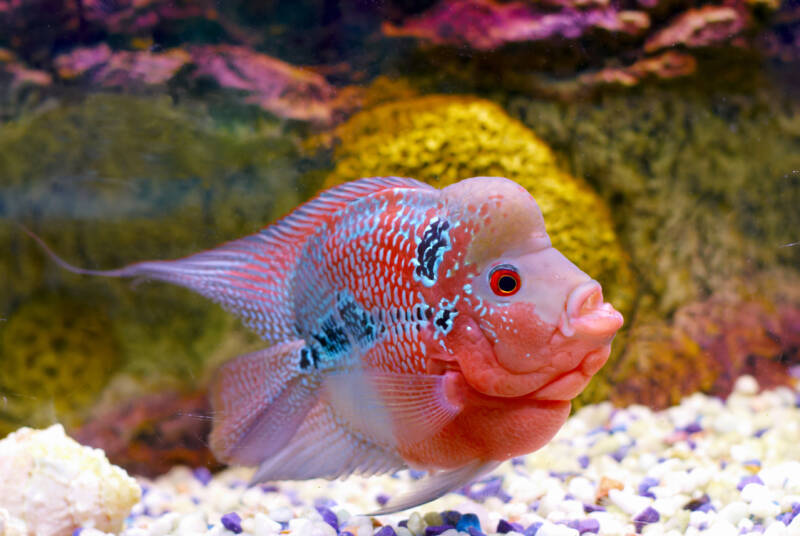
The best way to keep your fish from jumping is to set them up with the best environment possible. This keeps stress levels low and reduces the need for them to jump.
In addition to the water parameters and stocking numbers discussed above, many shy species need ample hiding spaces or plant cover, and their tank placed a low traffic area.
House your fish with peaceful tank mates to lower aggression from territorial or resource scarcity.
Even with the above in place, you may not be able to prevent some fish from jumping; however, you can make sure they do not end up on your living room floor.
Equip your fish tank with an aquarium lid and ensure it is well-fitting for larger species that have the strength to dislodge it.
For surface feeders or fish with a labyrinth organ, leave at least an inch (2.5 cm) of space between the water level and the lid.
Closing Thoughts
Some aquarium species are prone to jumping. You can reduce the odds of this behavior through suitable tank setup, stocking numbers, and water conditions.
Install a snug aquarium lid and house your fish with gentle tank mates to keep stress levels low.
Has your fish ever jumped from the tank?
What caused it to do so and how did you remedy it?
